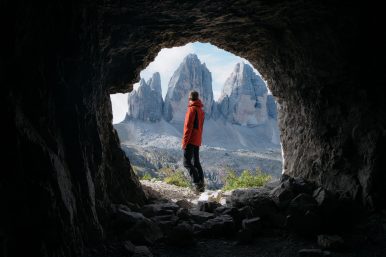Choosing a walkie-talkie for a hike in the mountains
Choosing a walkie-talkie for a beginner who wants to understand the topic before buying is a very difficult task. The network is full of reviews, articles and comments from users with very different experiences and qualifications, which makes it almost impossible to distinguish the truth from stereotypes or elementary mistakes. Radios – technically complex devices, and the features of their work depend on many factors. Therefore, the choice of radio station can not be reduced to one aspect. In this article we will analyze why walkie-talkies are so well-established in the backpacks of tourists, freeriders and climbers, and also touch on the issue of frequency ranges: how they affect the very type of radio design and predetermine your choice between them. We’ll have to dip into the world of physics, but it’s worth it.
The benefits of radio communications
Against the background of the rapid development of cellular networks, wireless Internet and satellite communications may seem that the portable VHF radios – an archaism and this direction of radio communication is a thing of the past. But that’s not the case at all. While we have watched the development of high technology introduced in our daily lives, the unique properties of VHF radios have firmly entrenched it in the sector of special tools. For a wide range of tasks radio is preferable due to a number of significant advantages.
Let us note at once that walkie-talkies in hiking and climbing are not a substitute for cellular and satellite phones, but a convenient means of communication within the group and necessary devices for organizing communication in emergency situations.
Communication can be organized in any place
This does not require additional infrastructure such as repeaters. It may seem that today there are no places where you can not get a phone, but in practice, such white spots are enough even in the settled and popular among tourists mountainous areas. Often there may be no communication at certain sections of the route, small from the point of view of an outside observer, but long for the hiking group. Also, radio communications may be the only way to coordinate tourists and communication with rescuers in sparsely populated and remote from civilization regions.
No communication operator
No intermediary, providing communications: no one will turn off your radio because of the accident on the operator or because you ran out of funds on your account.
Free and unlimited communication
You can talk on the radio as long as you like within its charge and absolutely free. But the constant use of a cell phone to communicate within the group can cost a serious amount, especially when traveling abroad.
Balanced and adjustable power consumption
The power of a walkie-talkie can often be adjusted depending on your needs along the route. When communicating over short distances, its power can be reduced to a minimum, which saves a noticeable amount of charge.
Virtually instant communication
You don’t waste time dialing, important for coordination. For example, during rescue missions or sporting events where every second counts. The speed at which short but important messages are transmitted is also important when the group is moving in cars, motorcycles, snowmobiles or bicycles. In these situations, the radio allows you to not be distracted by the display, or take your hands off the handlebars to receive a message, unless you have a special headset with a receive-transmit button that clips to your handlebar or finger.
When communicating over the radio, you also don’t need an instant response to a call. A person can simply listen to your message when there is no way to respond. For example, when organizing insurance, while skiing downhill, or exploring a ford. But in all other cases it is necessary to confirm the received information, repeating it in response, thus making it clear that the information was received correctly and in full.
Simultaneous communication with the whole group
Walkie-talkies allow you to connect with any number of people who are in the reception area and set up on the same parameters of reception-transmission. A telephone, on the other hand, assumes an individual format of communication.
Ergonomics
A portable radio station is often more convenient in camping practice than a phone. For example, you can use it in the cold without removing your mittens or gloves.




